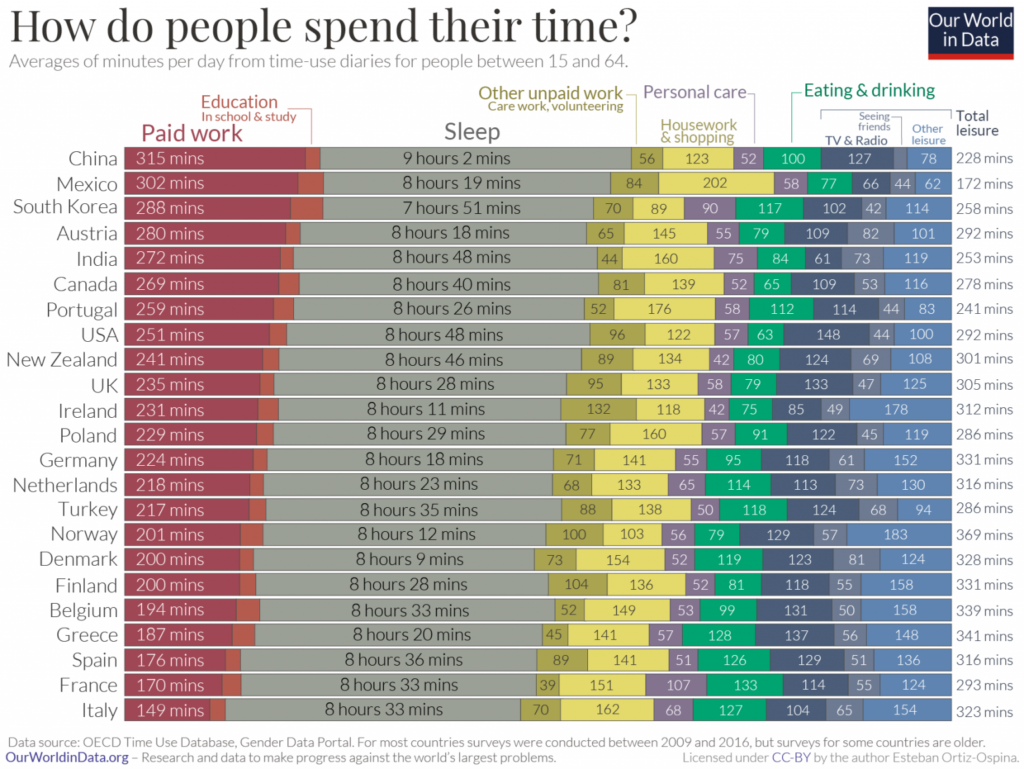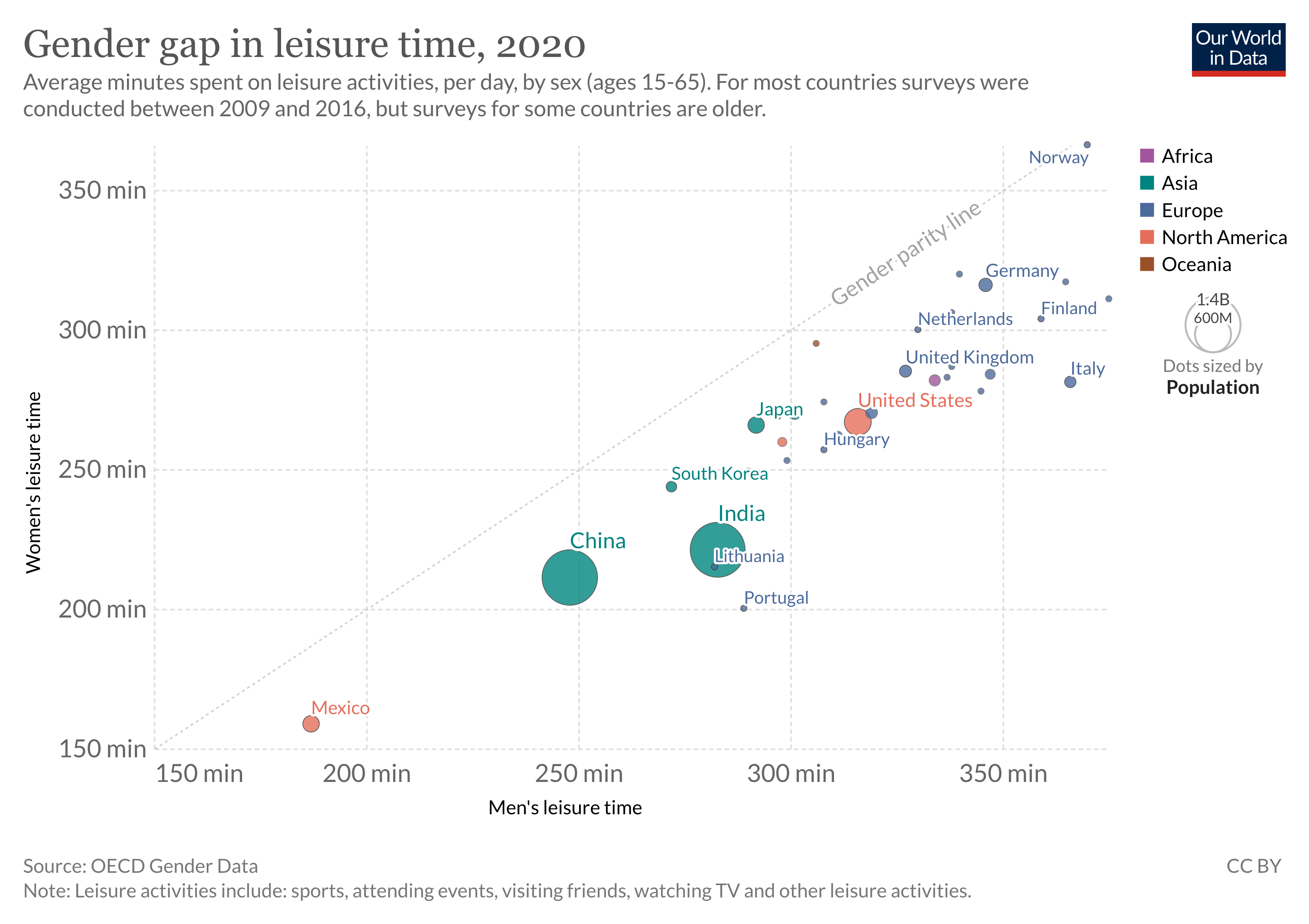
No matter where we’re from, how we look, or what language we speak, we all have 8,760 hours to spend in a year.
How we make use of those hours can determine the trajectory of our lives.
Whether it’s going out to socialize, sitting at home watching Netflix, or building a business, we are a make-up of the hours we spend.
While we might feel behind, staring at different social media accounts of people seemingly doing so many things, the way we actually spend our time is relatively similar. So, how are we all spending our time?
How people spend their time
Unsurprisingly, the two largest categories of time spent by most people seem to be doing paid work, sleeping, and leisure activities. Regardless of where you’re from, these three are the most common things we spend our time on. It’s only when we take a deeper dive into the data, can we see that some countries spend a bit more on some than others.
In countries like China and Mexico for example, they spent an average of over 300 minutes per day working, much more than people that lived in European regions such as Italy or France. While on average, most nations spent over 8 hours sleeping, people in Korea were reported to be sleeping on average of 7 hours 51 min minutes, perhaps putting more of that time sleeping into other leisure activities.

It’s interesting to take note of these differences in the data between each country, as it sheds a light on the behavioral differences per culture. For example, despite working almost as much as the Chinese, the people in Mexico spent the most amount of time out of the countries listed doing housework or shopping.
People from France, Spain, and Greece spent more time eating than those in the UK or Ireland — playing to the stereotypes of food culture. While the country that spent the least amount of time eating, despite being one of the top countries for obesity, was surprisingly the US. This might shine a light on the reality that Americans are not necessarily eating more than others, but consuming larger portions and less-healthy meals.
Notably, while we all love our leisurely activities, Scandinavian countries like Norway, Finland, and Denmark scored the highest in the amount of time spent on leisurely activities — from seeing friends, watching TV, or simply relaxing. This may explain why these three countries continue to be rated as the happiest countries in the world.
The gender gap in leisurely time
But even when we look into leisure, we can see that there are some behavioral differences between the genders. Based on the graph below (surveys conducted from 2009 to 2016), we can see that in all countries, the average time spent on leisurely activities was higher for men than women.
While these differences were relatively small in countries like Norway — where gender equality is considered one of the highest — in places like Portugal, men were reported to spend 50% more time on leisure than their women counterparts. This may be explained by the fact that women in Portugal, in general, spend longer working times than men, which may also be due to the disproportionate amount of unpaid work they need to spend, thus having less time for leisure.

These differences in leisure time are also quite big when comparing the people by their regions, as the bubbles from the graph demonstrate that people from Asia, such as Japan, South Korea, India, and China, spent less time on leisure than people in the European regions.
The data above shows that there is definitely a correlation between countries that spend more time working and having less leisure, to happiness and life satisfaction levels. Those who work more, score lower on the happiness index.
Spending time with our smartphones
While in the past, leisure activities meant going out, socializing, or just doing some form of physical activity, we’re beginning to see a lot more of that time spent scrolling through smartphones.
Based on smartphone usage data, the average person is spending close to 3 hours a day on their phone, with 1 in 5 smartphone users spending more than 4.5 hours on their phones per day. There were at least 7 countries — a majority from Asia or South America — that exceeded 5 hours per day.
With all this smartphone usage, some of the top things that people are spending their time doing on their phones include texting, emailing, social media usage, reading news, and online shopping.
Using our time smarter
As time passes, the amount of smartphone usage is only expected to increase, then decrease. In fact, more people around the world are getting access to smartphones, at quite a rapid rate.
What this means is that there is going to be more competition, more content, and more things to distract us from making the most use of our time.
The data above helps to give a better understanding how we’re spending our time. And with 8,760 hours to spend in any given year, learning to understand how we can break that time down and allocate those minutes over-spent in leisure or sleep, into other activities such as education, learning new skills can be the starting point to making the most use of the limited time we have.











